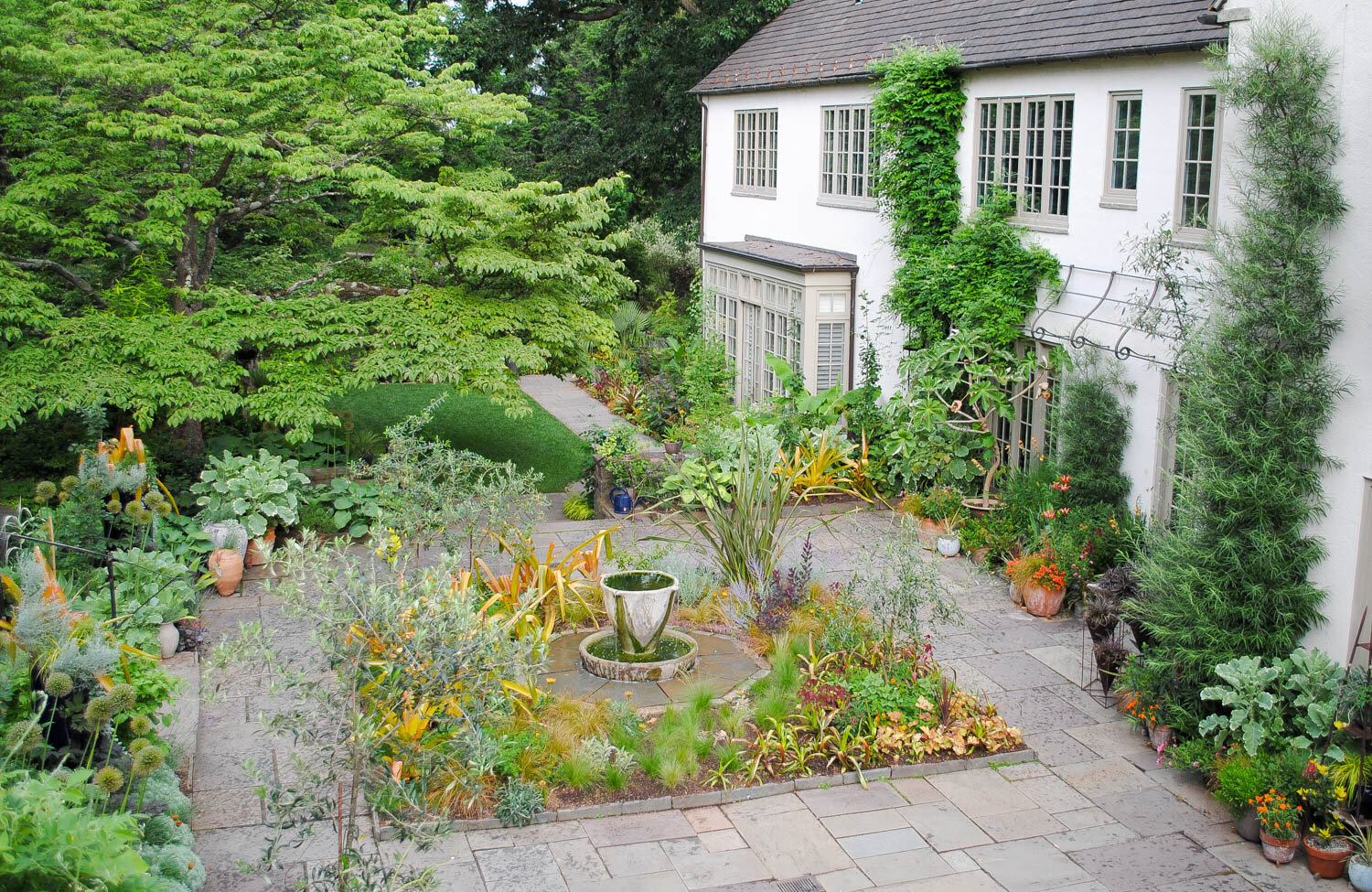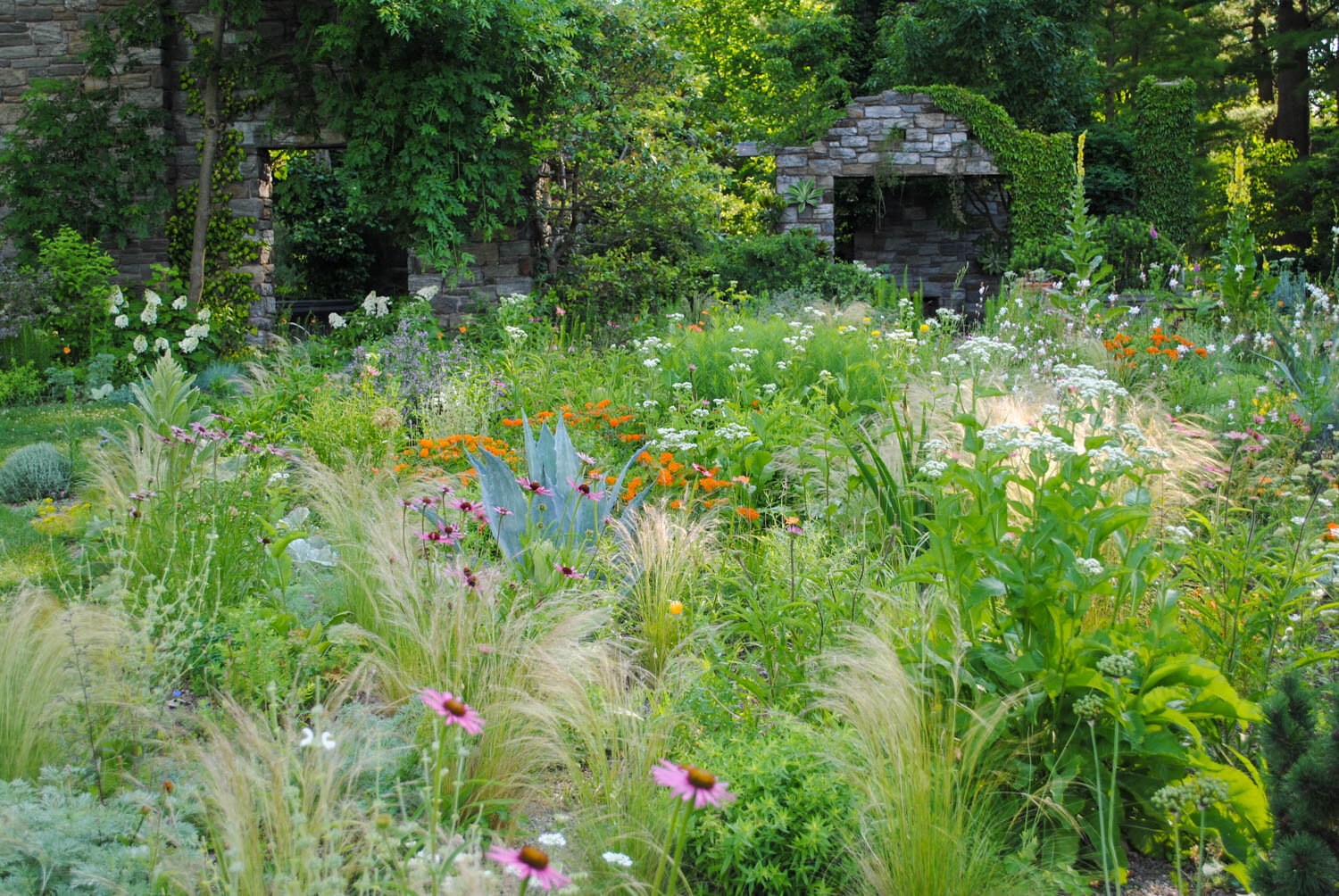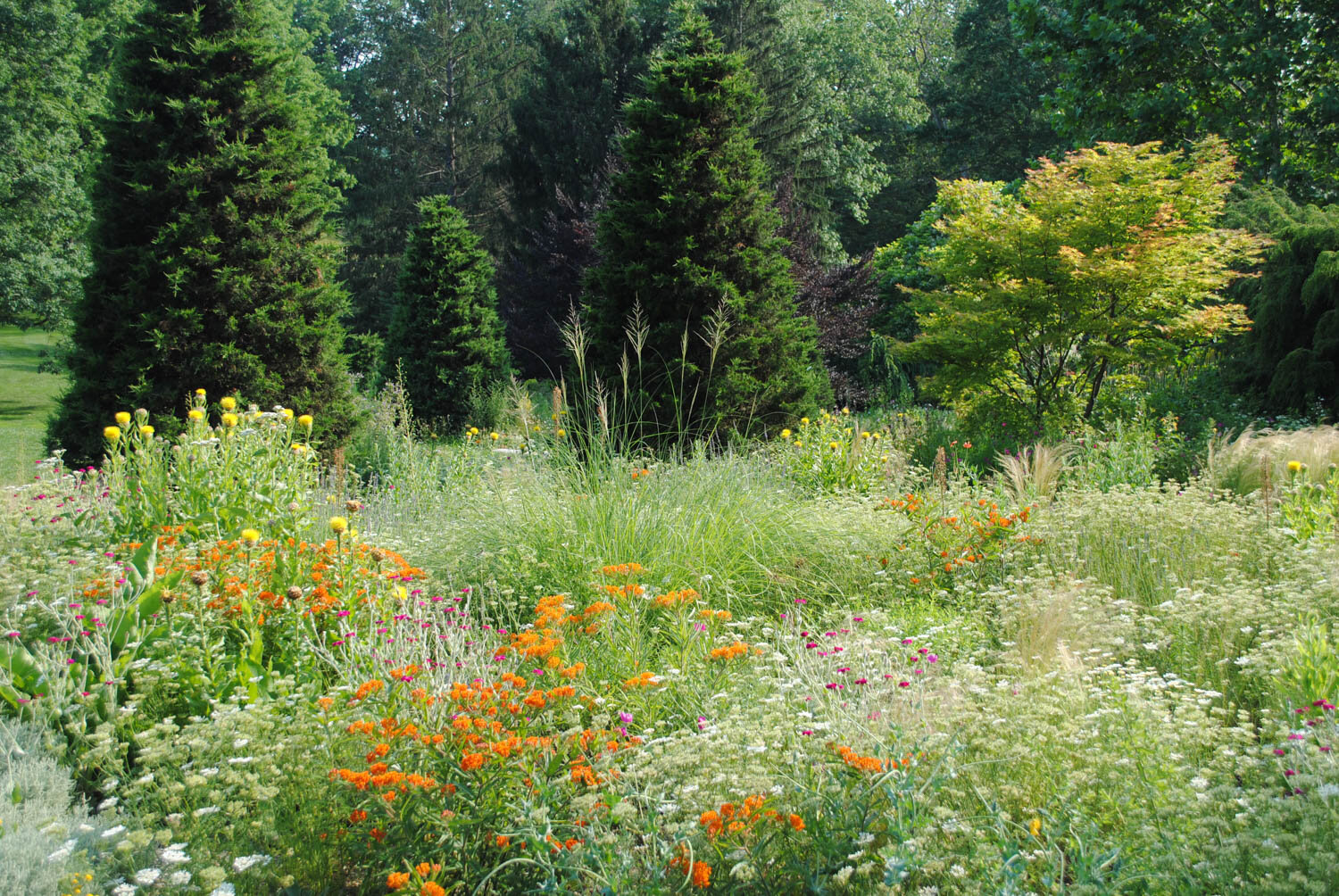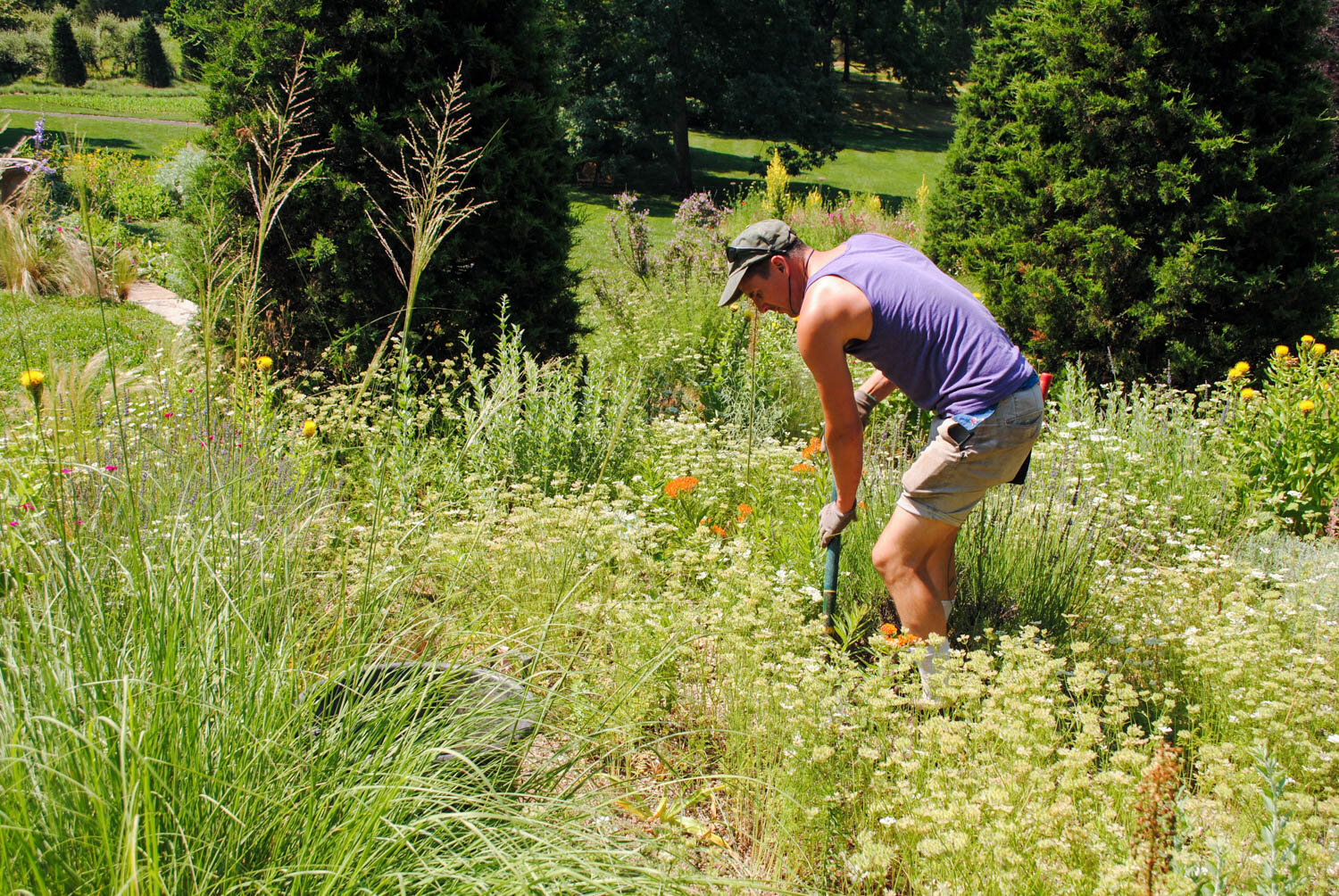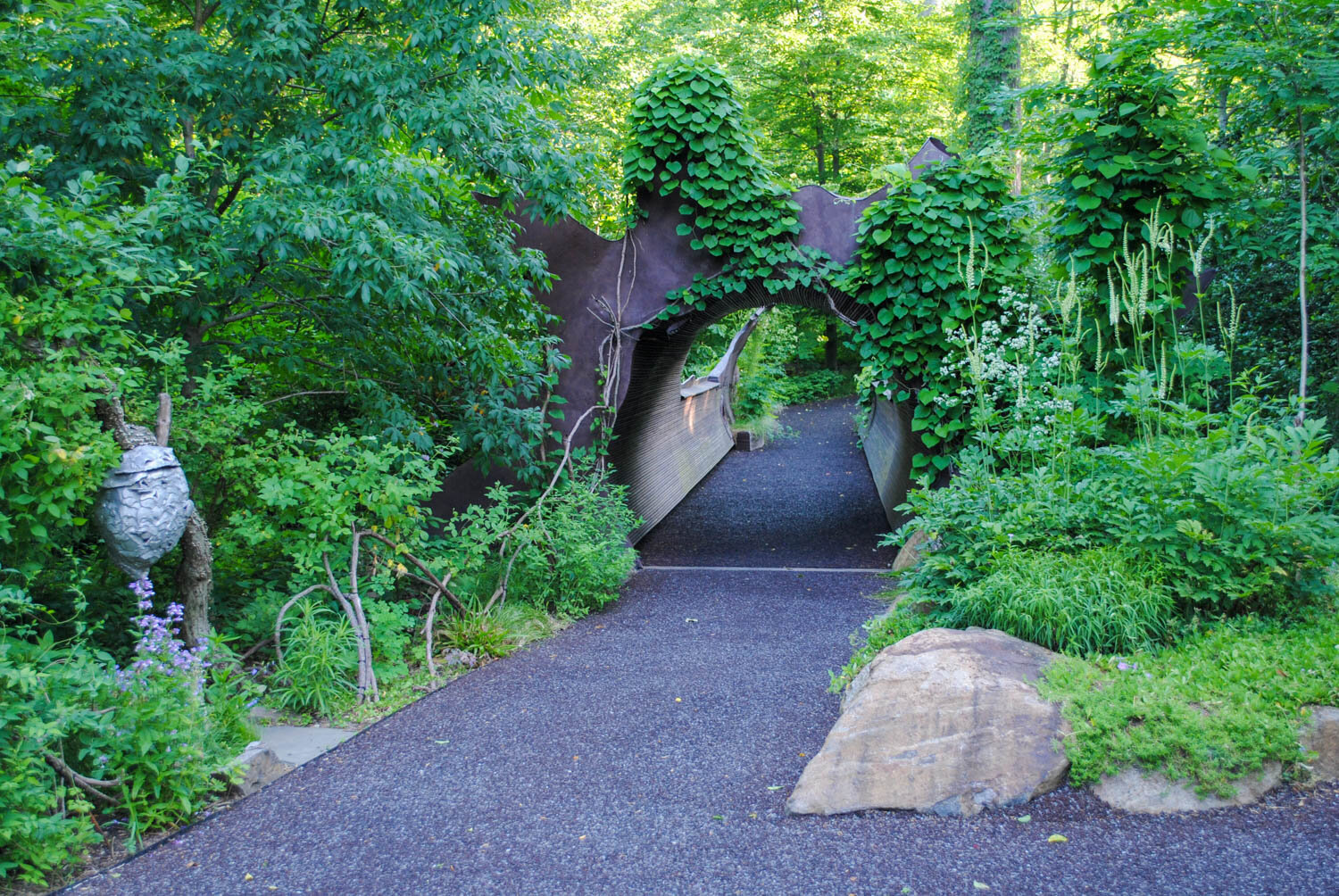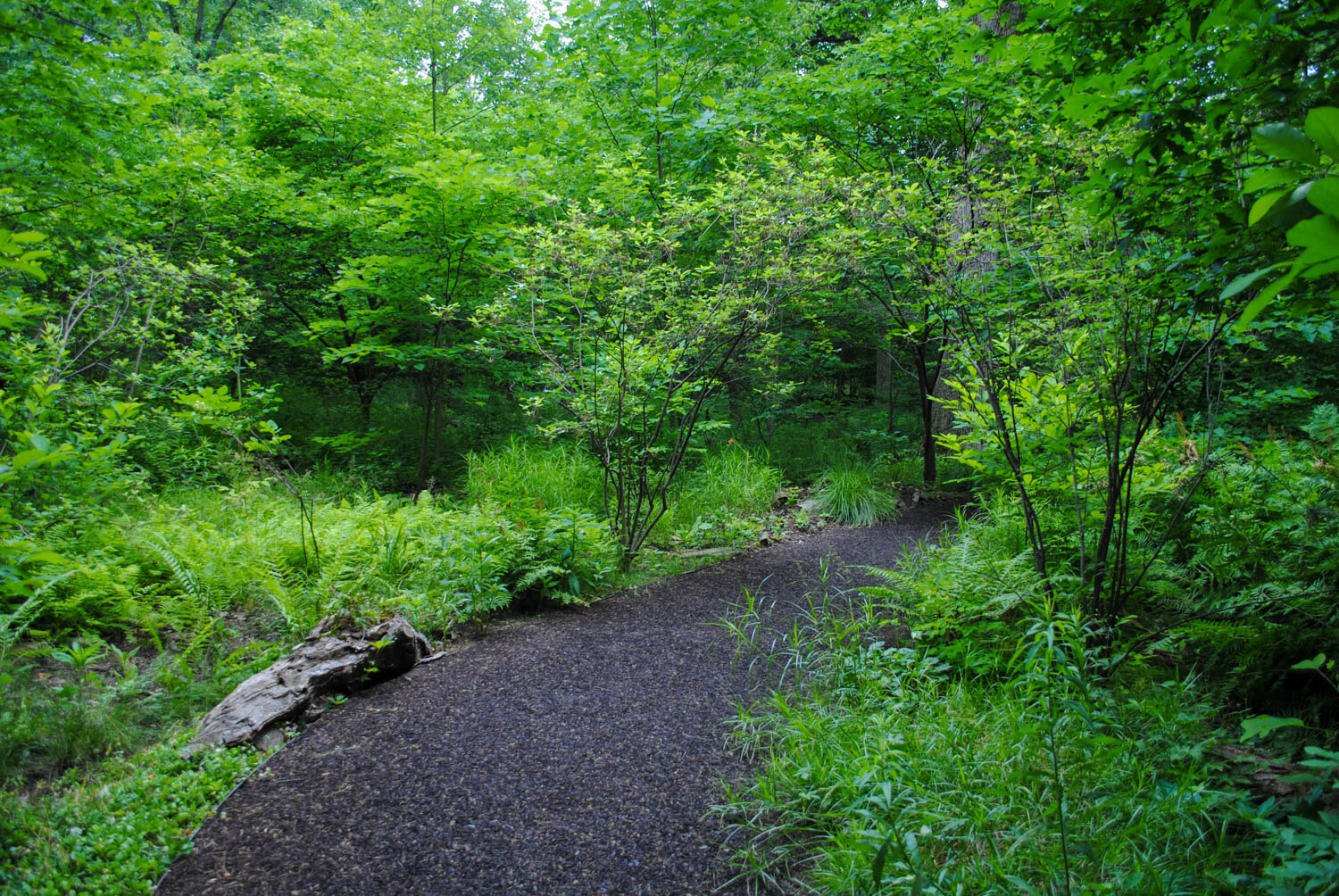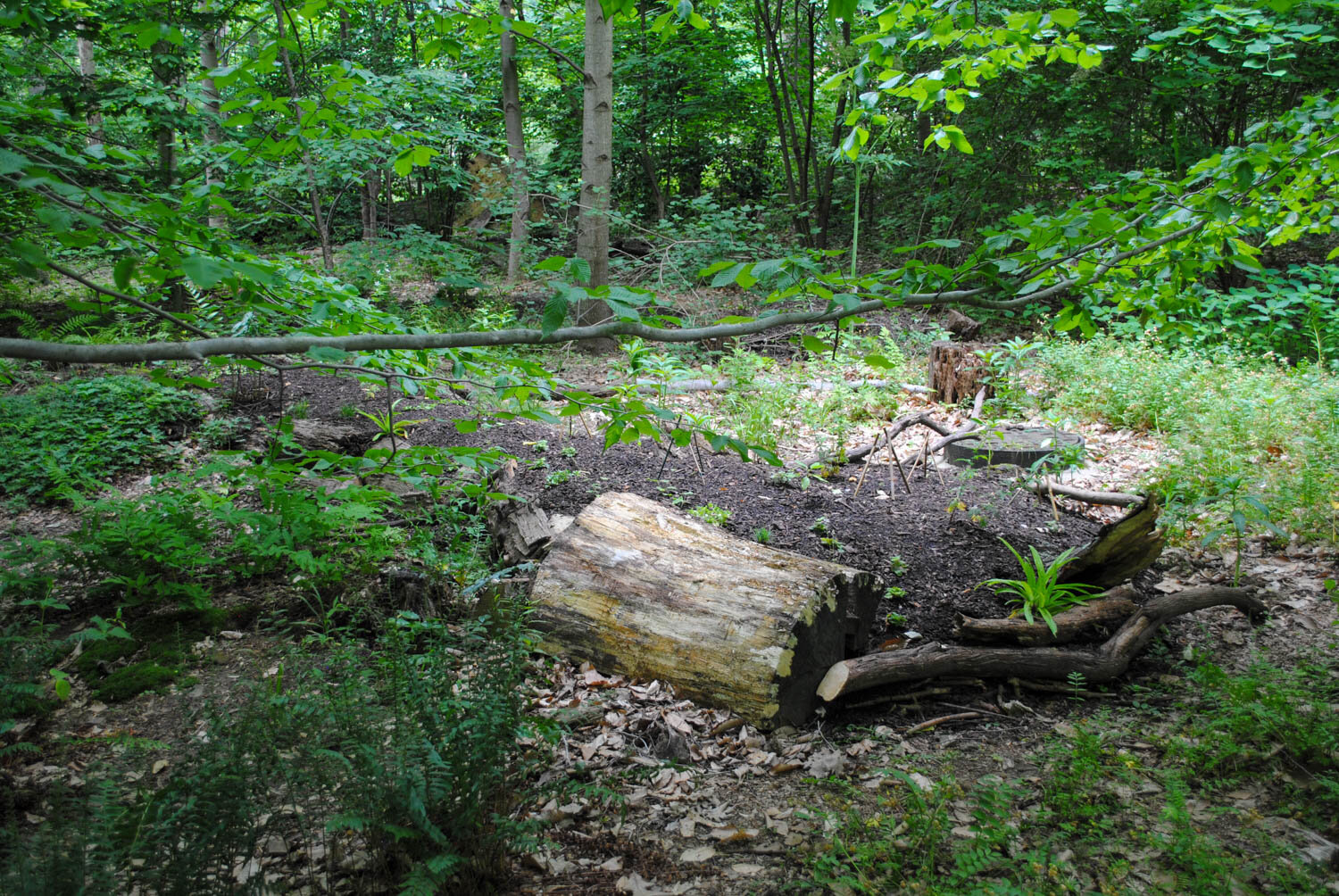This post is the second in a series on guest gardening at Chanticleer. Reflections on the first day can be found here.
Day 2, Tuesday 21 June 2016
The next morning, I woke again before sunrise to get out in the garden and retrace some of my steps from yesterday. I focused on exploring the teacup garden and the plantings around the main house at Chanticleer. Often, these displays are full of color, texture, and wow factor to tickle visitors senses when they first enter.
The entrance to the teacup garden at Chanticleer
A close up of the Fagus sylvatica ‘Purpurea Tricolor’ that frame the entryway
Looking down on the teacup garden
This photograph is a wonderful study in texture and colorful foliage. Very few plants are in flower, and yet the scene is so pleasing to the eye.
Emergents like Gaura and Verbena erupt out of the flowery lawn behind the Chanticleer house
An excellent example of color echo between the Crambe, Agave, and pool house roof.
Once the work day started, I met up with Eric Hsu. While Eric serves as Plant Information Coordinator at Chanticleer, he told me that he wears many hats like overseeing bulb orders.
Curation of plant names and pertinent information like their origin is crucial for a botanic garden’s inner workings. Hey, it’s even important for common gardeners like you and me. Anyone who has ever recorded plant information knows how meticulous and time consuming getting it right can be. But, it is essential for reference and education. As I tell my students, plants can’t talk to us (at least not yet!). So, we have to make sure that we keep good records and information about them to educate and share their stories with others.
Eric said that plants were accessioned as they arrived at the garden and that only one person had access to editing the data. Individual gardeners kept seed records and also documented any self sowers that occurred in the garden.
Eric saved this accession note (aka a stem or perhaps a scape) that a gardener brought to him. He said anything that contained plant information was helpful!
I had long wondered about the plant lists at Chanticleer and why labels weren’t plentiful. Eric told me that there was a fine line between education and the purpose of the garden being a pleasure garden. Having labels everywhere can detract from the overall presentation of plants. However, labels were made for plants that attracted frequent visitor questions.
After I met with Eric, I headed to the gravel garden to help Chris Freimuth, one of the interns for the summer. The gravel and nearby ruin garden is one of my favorite parts of Chanticleer. I don’t think I realized it at the time, but working in the gravel garden was probably my first good perspective at plants growing in gravel, and spending time in this garden made me realize that gravel was an easy way to force plants to grow under stress to reduce weed competition and increase plant diversity.
I love the perennial plantings in the gravel garden. Here, Orlaya grandiflora dances around Centaurea macrocephala and Asclepias tuberosa.
Another shot of the gravel garden closer to the ruin. Another common plant that was woven through the plantings was the ever airy Nassella tenuissima.
Such dynamism here between the lines of Consolida ajacis and the curves of Nassella tenuissima. Note their fade as you approach the path on either side, which creates a sense of layering.
Our task for the day was removing Orlaya grandiflora from a bed in the ruin garden. It’s a self sowing annual. The volunteers had been left just long enough to allow good seed set for next year, but at some point self sowers become a bit unsightly, and these had hit that mark. I also have to add there was a bit of whimsy in seeing the planting change over the course of a late morning.
Here’s a photo of the bed that Chris and I worked in to remove the Orlaya grandiflora. Notice there are still blooms to see, but much of it has gone to seed.
I pause from helping Chris Freimuth remove the Orlaya to snap a photo of the process.
Here is the after. With the Orlaya gone, you can more clearly see the other perennials that comprise the planting.
And, I love photographing minutiae like the edge here between the grass and gravel.
In the afternoon I spent some time with Przemek Walczak in Bell’s Woodland, the native plant garden that runs along the creek called Bell’s Run. We discussed his efforts to channel wilderness through the garden. The entrance to this part of Chanticleer is a faux log bridge covered with vines and other plants to blend it into its surroundings. We also discussed his handwork with wood from structures made in the garden to a simple bee hotel made out of kindling.
The entrance to Bell’s Woodland is a bridge that is designed to resemble a fallen tree. Note the plant list box on the left that resembles a hornet nest!
Along the bridge are planters with sedum and mosses to soften the edges of the hardscape.
This native insect hotel was one of Przemek’s creations. Such an easy project for kids to teach them about the importance of pollinators.
Many have the concept that native plant gardens are all green and ho-hum, but this mass of Spigelia marilandica is certainly something to behold in Bell’s Woodland.
Vegetation hugs the edges of Bell’s Run.
An opening in Bell’s Woodland
We also discussed his approach to growing plants in Bell’s Woodland. One way that he propagates species is that he sows perennial seed on the ground to stratify and then covers it with mesh to keep hungry frugivores away. I thought this approach a clever way to take advantage of nature’s refrigerator. Przemek is also a fan of hugelkultur, the practice of creating garden beds using logs and other debris as a base and topped with growing media. It allows gardeners to quickly create elevated surfaces in their garden as well as hide fallen detritus.
A hugelkulture bed in Bell’s Woodland freshly planted with perennials
The second day of guest gardening came to an end. I was excited to see what tomorrow had in store. Part three is coming soon!
Manicured lawn sinuously flows into wild plantings along Bell’s Runs.


